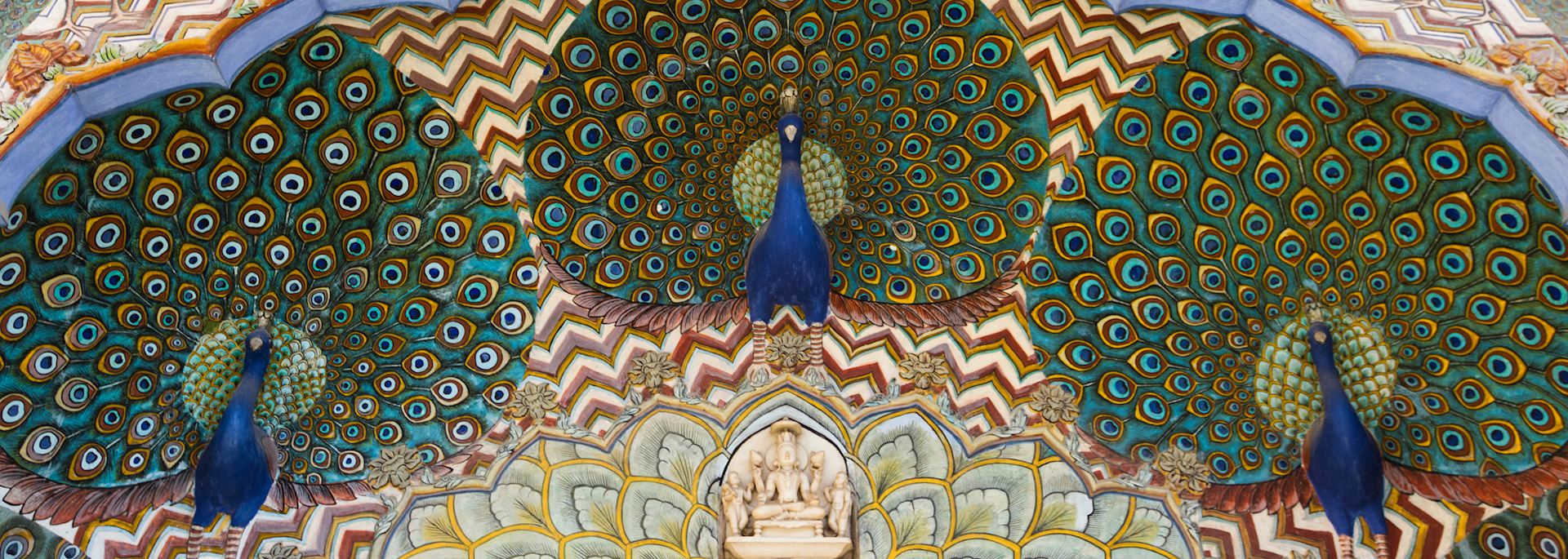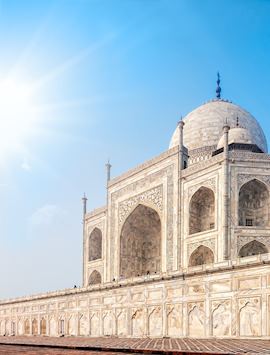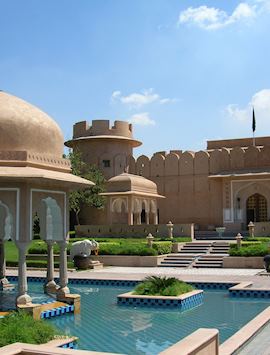There are so many palatial hotels in India, we could write a book on the subject. After lengthy discussions, our specialists have collated the very best of the best. In a country the size of a continent, India has enough royal dynasties to rival Europe, each with its own traditions, architectural styles and luxurious lifestyles, now yours to experience.
You could combine all these hotels into one journey through Rajasthan (albeit with a private car and driver rather than a procession of elephants). Broaden your scope by flying onward to Varanasi or Hyderabad and you’ll have a truly regal trip.
Jaipur: a Rajput stronghold by Hannah
Despite years of political upheaval, the descendants of Rajput Maharaja Sawai Jai Singh II, who founded Jaipur in 1727, have ruled the city for hundreds of years. Jaipur now sits in the democratic state of Rajasthan, but the royal family still live in the City Palace and manage a number of trusts, museums and palaces to conserve their heritage.
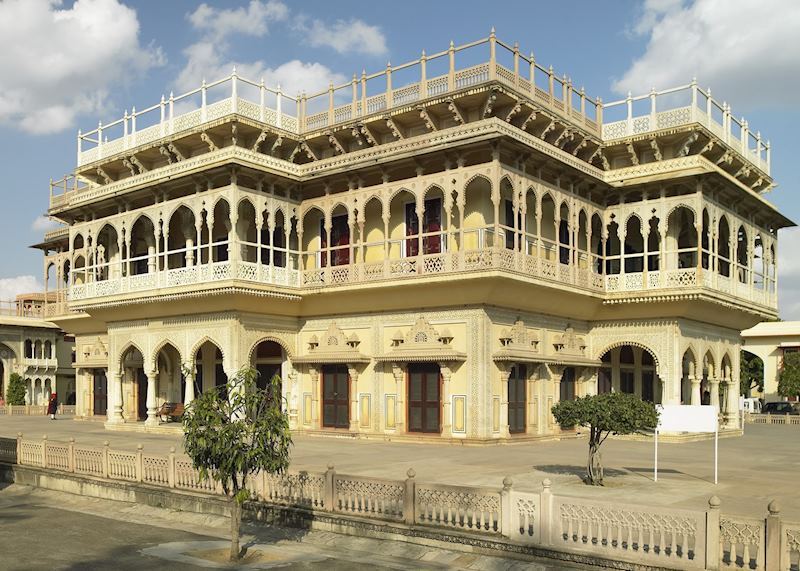
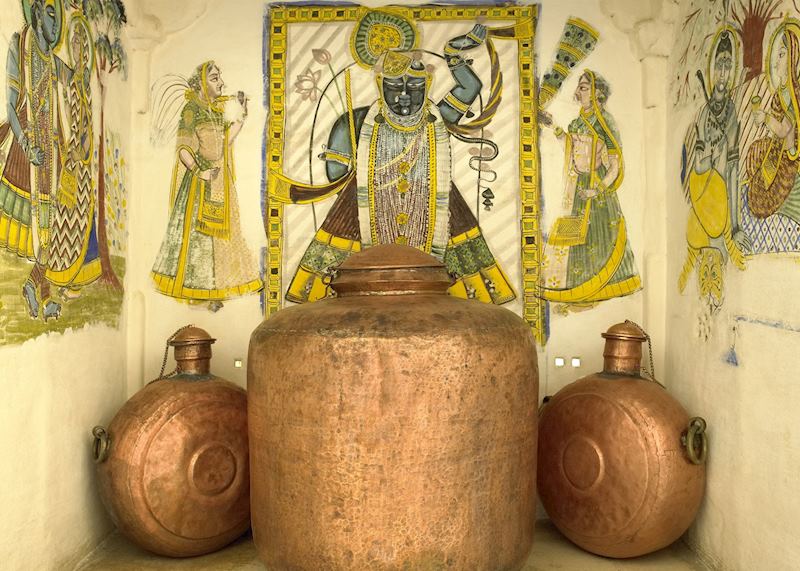
Part of the palace has been converted into a museum, where you can admire jewel-encrusted saris and pashminas so intricately embroidered that each one was the life’s work of a single artisan. The armory has a collection of weapons so finely engraved it’s easy to forget their true purpose. The art gallery ceilings are elaborately inlaid with floral motifs — the art itself can seem superfluous.
SUJÁN Rajmahal Palace
Almost all the palaces and royal residences in Jaipur are now hotels (although be wary of newer hotels masquerading as palatial properties). One of the most recent converts is Rajmahal Palace, the private home of the last Maharaja of Jaipur.

There are only 14 rooms, and I felt like a guest of the family, especially with the pastel-pink turbaned butlers tending to my every whim.
There’s no faded grandeur here. The palace’s rooms have been refurbished with individually designed hand-stamped wallpaper and locally woven silk bed linen. The shades and motifs chosen have a modern feel, and the original chestnut furniture has been reupholstered — this is 21st-century regal living. Suites are named after pre-eminent past guests, including Queen Elizabeth II and Jackie Kennedy.
Originally designed as a country retreat (before Jaipur expanded past its city walls), the palace sits in extensive gardens built around a sunken Art Deco swimming pool. Stroll the grounds and you’ll find neat lawns dressed with plump chaise lounges and tables laid out for afternoon tea.
Jodhpur: the last Maharaja of India by Nick
In 1947, Maharaja Hanwant Singh of Jodhpur tried to cling onto royal leadership, constantly opposing the dissolution of his princely state. He considered joining Pakistan, but eventually signed the Instrument of Accession, a document declaring Jodhpur part of the newly independent India.
The maharaja came from a long line of Rathores, a Rajput clan who’d ruled Jodhpur since 1459. The best way to experience their might is within the mammoth walls of Mehrangarh Fort, which dominates central Jodhpur. Walk the ramparts to see antique artillery, scars made by cannonballs and views across the city.
Wander a little farther outside the fort walls and you find Jaswant Thada, the royal mausoleum. The marble tombs and cenotaphs are carved from marble so thin they seem to glow with the light of the reddening setting sun.
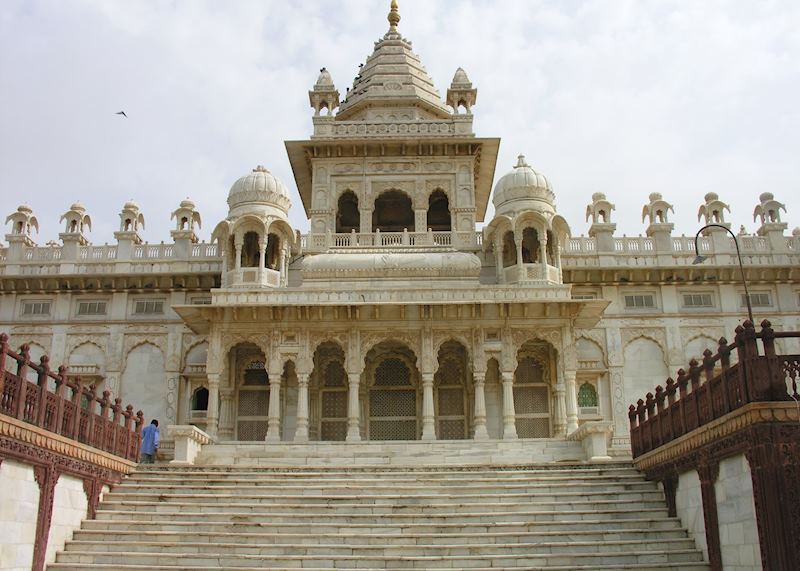
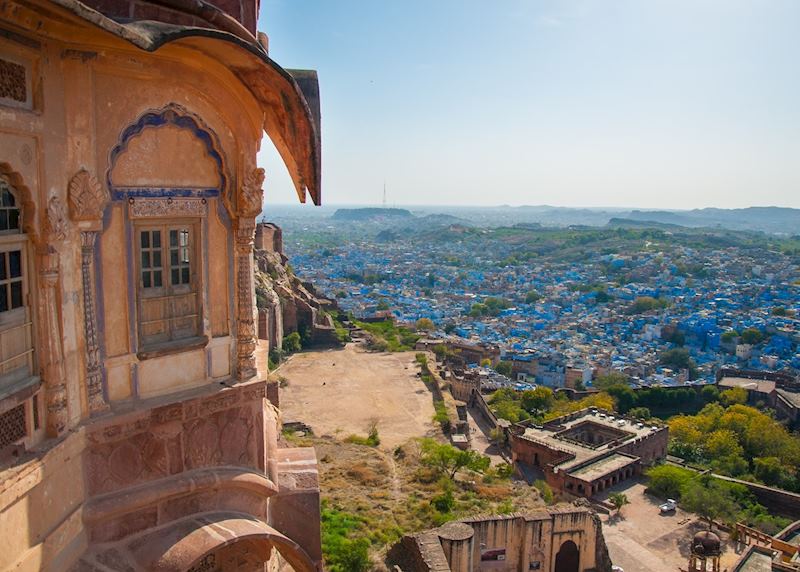
Umaid Bhawan Palace
Stand on one of the southeast-facing balconies of Mehrangarh Fort and you’ll see a huge domed building on the skyline. This is Umaid Bhawan Palace, the private residence of Jodhpur’s last maharaja. By no means a vanity project, the palace was commissioned to provide employment for the local people, who were facing a severe famine. It was finished in 1943 — the final royal palace built in India.
Although no longer in power, the royal family still live in part of the palace, but the rest has been converted into one of India’s most luxurious hotels. When you arrive, you’re greeted in the marble-floored, domed rotunda with a glass of champagne.
You could spend hours wandering the marble hallways, which lead to vaulted banquet halls, a billiards room, an underground swimming pool and the world’s only marble squash courts. Breakfast is served to the sound of a local musician playing the bansuri (bamboo flute), and you can have dinner on the terrace, looking across to Mehrangarh Fort lit up on the skyline.
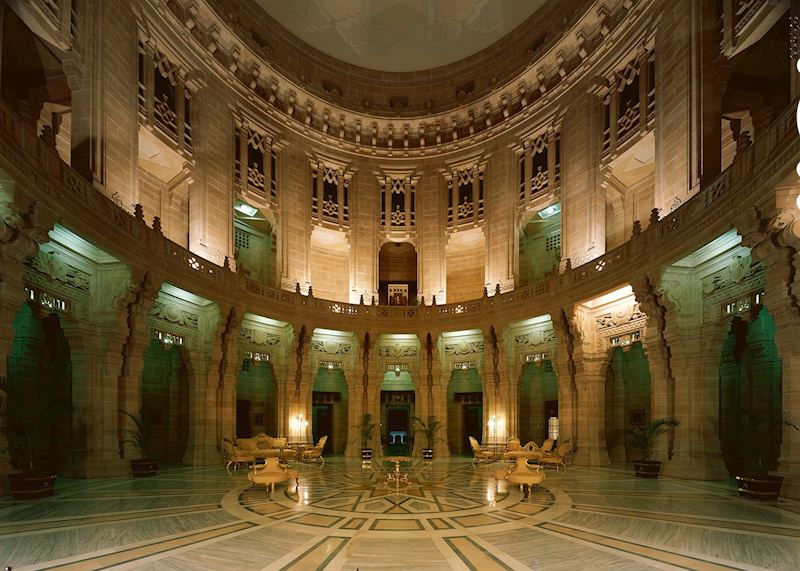
I stayed in a palace room. In any other hotel it would be called a suite, with its sitting area overlooking the gardens. Your butler attends to every detail, such as preparing your preferred tipples (whiskey, in my case). Royal suites still model their original Art Deco furniture — the likes of which would normally be in a museum.
Udaipur: the long-standing kingdom of the Mewar dynasty by Niall
In 1553, Maharana (a Hindi variation of Maharaja) Udai Singh II relocated the capital of his Mewar Kingdom to the banks of Lake Pichola. The new city of Udaipur was naturally fortified by the Aravalli Hills, helping to ward off attacks from the Mughal emperors farther north.
Udaipur is part of Rajasthan, but its delicate, white-marble architecture and surrounding green hills feel worlds away from the dusty red sandstone cities of the Rajputs. The royal family commissioned palaces with abandon, from the City Palace still in use, to the Sajjan Garh Palace, a summer resort built on a peak overlooking the lakes.

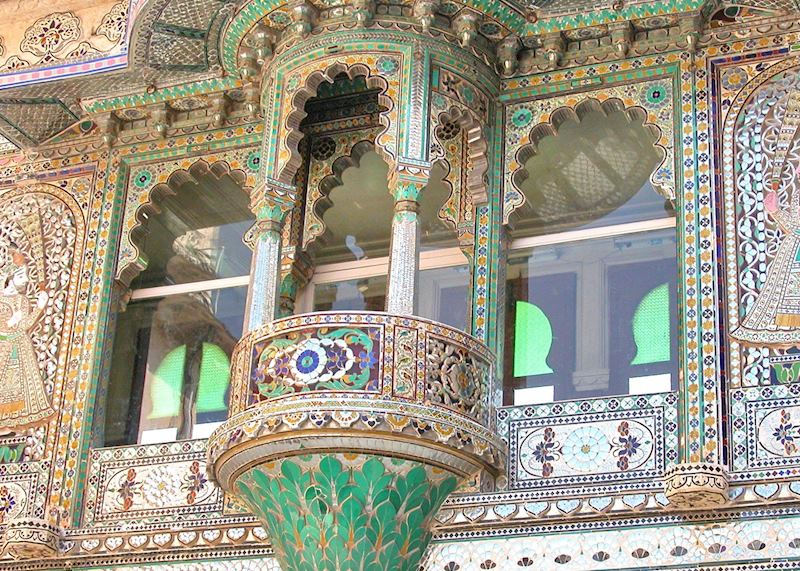
Taj Lake Palace
Although it followed a few hundred years after Udaipur’s first regal abode, Taj Lake Palace seems to command the city. This three-story marble edifice rises from the middle of Lake Pichola, its foundations resting on the lakebed so that the water laps right under the bedroom windows. Other hotels boast of prime palace views, and restaurants angle their outdoor terraces in Taj Lake Palace’s direction.
The original purpose of the palace has never been confirmed. Some suggest it was the royal family’s winter palace, while local legend tells it was built for Maharana Jagat Singh II (a descendent of Udaipur’s founder) as a pleasure palace, housing his zenana (harem).
In 1971, the palace became a hotel, welcoming guests into marble-floored suites decorated with motifs of semi-precious stones, gallery-worthy murals and ornate pottery.
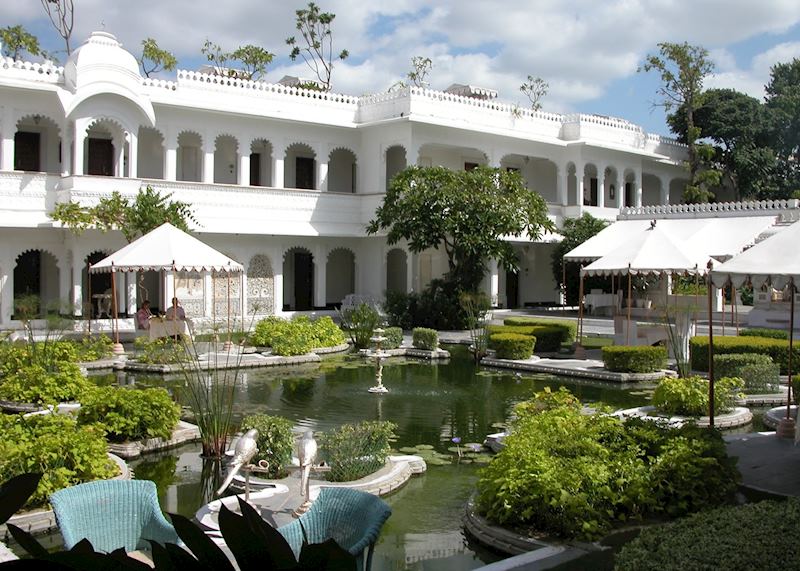
Your first sight of the hotel is from the water as you approach on a small boat, shaded by a gilded canopy. One of the smartly uniformed butlers was waiting to greet me (the manager proudly told me later that most of the butlers were direct descendants of the original royal attendants) and ushered me through the lily-pond courtyard to my room.
During my stay, nothing seemed too much trouble, from the petals arranged carefully along the pathways each morning to the fresh towels and cooling lime soda that appeared whenever I approached the pool. Sitar players accompany afternoon tea and, should you want to cross the water to the city, a turbaned man with an enormous mustache stands sentinel by the hotel’s private jetty, ready to ferry you across.
The Leela Palace
For me, there’s one problem with staying in the Taj Lake Palace: you can’t see it. Its white-marble reflection off the water as the sun sets, the city lights glittering behind, is Udaipur’s finest view. As a modern alternative (or, ideally, stay a couple of nights in each), The Leela Palace is a hotel built with all the glitz, glamour and luxury of a palatial complex, set on the lakeside overlooking the Lake Palace.
You can still arrive by boat, and you’ll be showered with rose petals as you step into reception. Ornamental gardens, lily ponds and a huge swimming pool run along the waterside, and the spa has its own incense-filled temple. You can walk into town from the back gate, through narrow shop-lined streets. I lunched in a local café, whose specialty was a fragrant pumpkin curry.
Back in the Leela’s gardens in the evening, thousands of candles are lit, sitars play and the Taj Lake Palace shimmers in the background. I sat, a cocktail in hand, watching fruit bats swoop over the water.
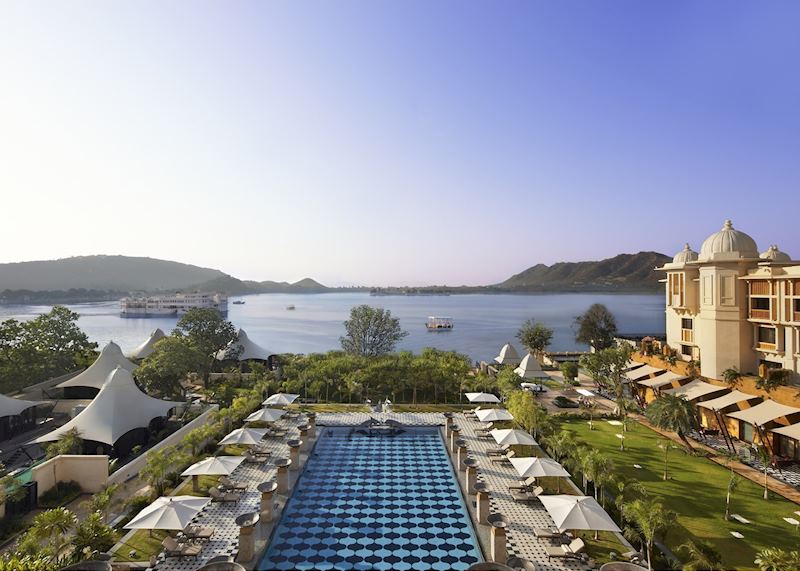
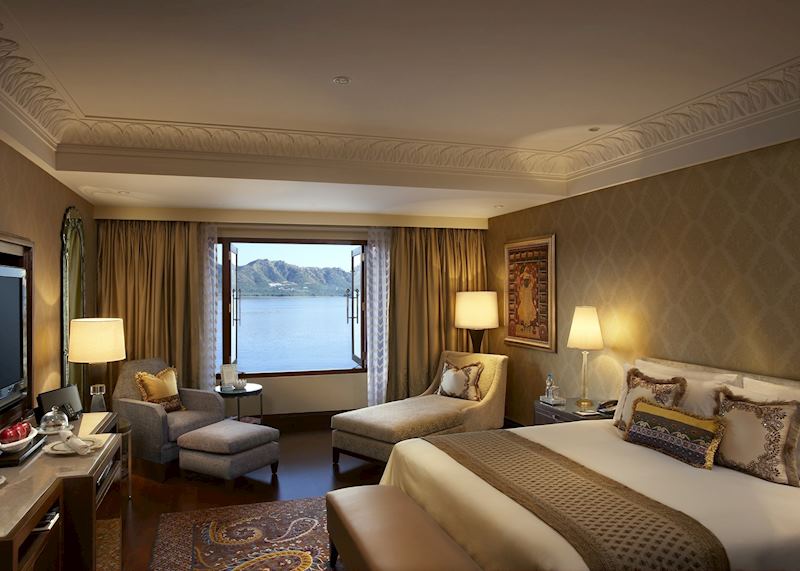
Hyderabad: a kingdom swiped from Mughal rule by Alison
Right in the middle of India, the city of Hyderabad has been invaded from all angles, passing from feudal chieftains to Buddhist kings and Hindu dynasties. In 1724, the Mughal Empire took charge, making young commander Āṣaf Jāh Nizam al-Mulk administrator of the region. He declared himself sovereign as the Mughals began to lose power and created his own ruling dynasty: the Nizams of Hyderabad.
Thanks to the city’s diamond and pearl industries, the dynasty became one of the wealthiest families in the world. Every time a new Nizam succeeded to the throne, he built his own palace. Some have fallen into disrepair, but Chowmahalla Palace, where ascension ceremonies were held, is a museum where you can learn more about the family.
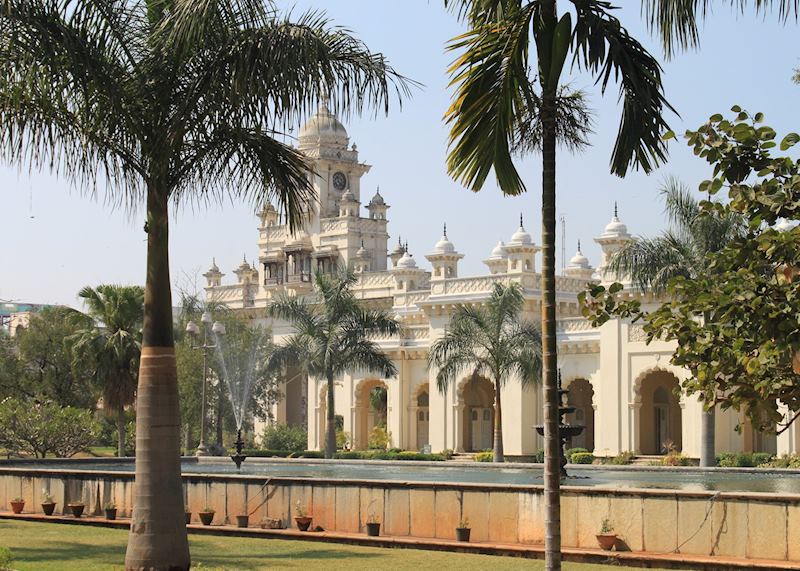
Taj Falaknuma Palace
There aren’t many places I’d travel just to stay in a particular hotel, but this is one of them. Built in 1894, Taj Falaknuma Palace is one of the Nizams’ later efforts. With a neoclassical façade and Greek pillars, the building looks a bit like a merging of Buckingham Palace and the White House. In 2000, it opened to the public as a luxury hotel.
Your flamboyant arrival begins at the front gate, where a horse-drawn carriage (the very same the Nizam used) will take you through the grounds to the palace’s front entrance. As you disembark, a shower of rose petals are scattered from the balcony above, and a necklace of marigolds is placed around your neck.
Inside, you’ll find ornate ceiling frescoes and a collection of valuable paintings, statues and manuscripts. The library has a carved walnut roof — a replica of one at Windsor Castle.
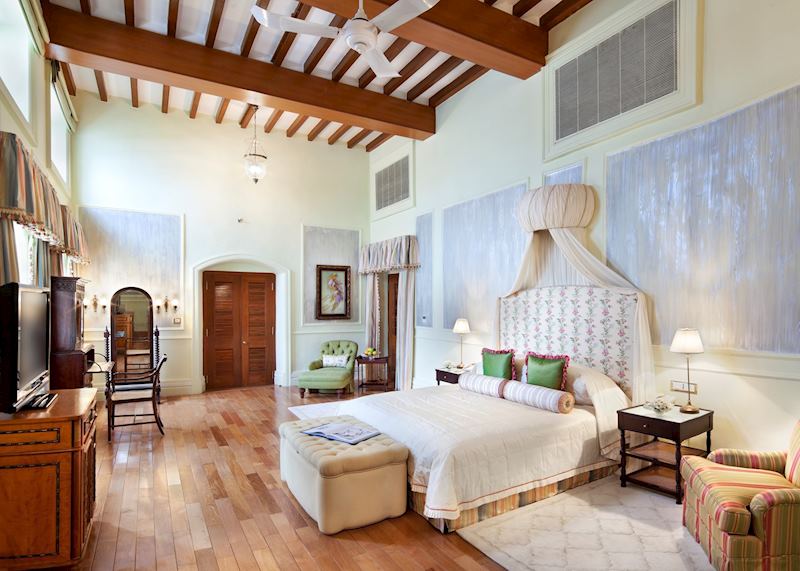

I stayed in a palace room, which was regal enough, but if you have the budget, the historical suites are the original guest rooms that once entertained King George V and Tzar Nicholas II. Take the heritage walk and the hotel’s guide will show you some of the original, now-restored palace rooms. The dining table, I was told, is the largest in the world, seating more than 100 people.
Days can be spent by the marble pool or in the spa, although I suggest making time to tour Hyderabad itself. Golconda Fort is a monumental pile of ramparts on the city outskirts, with so many rings of fortifications, I can’t understand how the Mughals managed to take it. My guide pointed out holes in the stone walls that were originally studded with iron spikes to curtail war elephants. Back at the hotel, a hot bath floating with rose petals and scented with jasmine was waiting for me.
You can take high tea in the Jade Terrace, under glittering Belgian chandeliers. Dinner is served in the Italian Celeste restaurant (appropriate in the Renaissance-inspired dining room) or the Indian Adaa restaurant.
Varanasi by Sophie
In the holy city of Varanasi, it’s the gods, not royalty, that dominate. Hindus believe that Shiva founded the city when he fought against fellow god Brahma, ripping off one of his five heads. Various Mughal emperors, Brahmin kings and Maratha dynasties have frequented the city over the years, building temples and funding monasteries.
The Nepali Mandir is a tiered wooden temple created by an exiled Nepali king in the early 19th century, while the main ghats, from where you can watch the evening aarti ceremony, were built by a Jaipur maharaja. No-one actually knows how many temples there are in the city (more than 20,000, it’s thought), so I suggest a guided walking tour to see the highlights.

Nadesar Palace
Among the temples are hundreds of palaces-in-miniature, conceived for visiting royals, dignitaries and wealthy tycoons. The East India Company built Nadesar Palace for King George V and Queen Mary, who visited Varanasi in 1906. The building was then acquired by Maharaja Prabhu Narain Singh, who used it to entertain guests when visiting the city.
The palace is now an eight-room hotel, welcoming guests in the same way it greeted regal visitors for years — with the trumpet of a conch shell and (yet another) shower of rose petals. The palace retains a colonial feel with Victorian walnut furniture and antique carriage clocks, which sit alongside photographs of maharajas in ceremonial dress.
You can consult the in-house astrologer (I’ll have many healthy children, apparently) or receive a private blessing in the palace temple. Relax on the lawns and you’ll be served hot spiced chai from earthenware cups.
You can also dine in private in the candlelit baradari (garden pavilion), enjoying a specially created thali (platter of dishes) after your personal consultation with the chef.
Read more about trips to India
Start thinking about your experience. These itineraries are simply suggestions for how you could enjoy some of the same experiences as our specialists. They're just for inspiration, because your trip will be created around your particular tastes.
View All Tours in India
